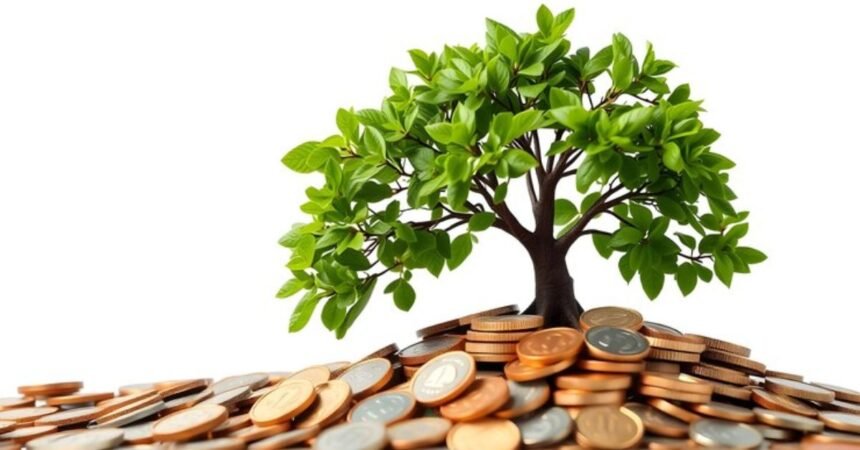In today’s world, the importance of socially responsible investing has become more evident than ever. Investors are not just looking for financial returns; they want to make a positive impact on the environment, society, and corporate governance. One platform that is gaining attention for aligning with these principles is the White Oak Impact Fund. This fund is designed to deliver financial returns while driving positive change by investing in companies and initiatives that prioritize sustainability and social responsibility.
This article will explore the impact investing, providing insights into its key concepts, importance, benefits, real-world applications, and the challenges associated with impact investing. By the end, you will understand why the White Oak Impact Fund is becoming a critical player in the sustainable investment landscape.
Detailed Explanation of White Oak Impact Fund:
What is the White Oak Impact Fund?
The White Oak Impact Fund is an investment vehicle that focuses on impact investing, where the primary goal is to generate measurable social and environmental benefits alongside financial returns. Unlike traditional investment funds that prioritize profitability above all else, the White Oak Impact Fund seeks to invest in businesses and projects that aim to address global challenges such as climate change, poverty, education, and healthcare access.
By channeling investments into these areas, the impact investing contributes to the development of a sustainable and equitable future. The fund evaluates companies based on their adherence to ESG (Environmental, Social, and Governance) criteria, ensuring that investments are made in businesses that prioritize responsible practices.
Understanding Impact Investing
Impact investing refers to investments made with the intention of generating a positive, measurable social or environmental impact, in addition to financial returns. The difference between impact investing and traditional investing lies in the prioritization of outcomes that go beyond financial profits. Impact investors look for investments that align with their values and contribute to long-term solutions to pressing societal issues.
The impact investing is an example of an impact fund that strategically allocates capital to initiatives that contribute to improving communities, enhancing environmental sustainability, and promoting corporate transparency and governance.
Environmental, Social, and Governance (ESG) Criteria
ESG criteria are a set of standards for a company’s operations that socially conscious investors use to screen potential investments. The impact investing evaluates companies based on these three key factors:
- Environmental: This refers to a company’s environmental impact and how well it manages resources, energy, and waste. Companies that prioritize reducing their carbon footprint or investing in renewable energy sources score high on this measure.
- Social: The social aspect focuses on how a company treats its employees, customers, and communities. This includes workplace diversity, employee rights, and the company’s involvement in community initiatives.
- Governance: Governance refers to how a company is run, including its leadership, executive pay, internal controls, and shareholder rights. Companies that prioritize transparency, ethical behavior, and robust governance structures are viewed favorably.
By investing in companies that score well on these ESG criteria, the White Oak Impact Fund ensures that its portfolio contributes to sustainable and responsible business practices.
Importance and Benefits of the White Oak Impact Fund
1. Aligning Investments with Values
One of the most significant benefits of the White Oak Impact Fund is the ability for investors to align their financial goals with their personal values. As more individuals and institutions recognize the need for responsible investing, they seek opportunities that allow them to contribute to social and environmental causes while growing their wealth. The impact investing offers a solution by investing in companies that work toward creating a better world.
Investors who care about issues such as climate change, fair labor practices, and community development can feel confident that their capital is supporting initiatives that align with these goals.
2. Addressing Global Challenges
The White Oak Impact Fund directly targets some of the most pressing global challenges. From renewable energy projects that reduce carbon emissions to healthcare initiatives that expand access to underserved populations, the fund focuses on sectors that drive long-term positive change. By investing in these areas, the fund contributes to global development goals such as the United Nations’ Sustainable Development Goals (SDGs).
Examples of sectors where the White Oak Impact Fund invests include:
- Clean energy and renewable resources
- Affordable housing projects
- Education technology and resources
- Sustainable agriculture
- Water and sanitation improvements
Each investment made through the fund contributes to addressing these challenges while providing investors with financial returns.
3. Generating Competitive Financial Returns
Contrary to the misconception that impact investing sacrifices financial returns for social good, the White Oak Impact Fund proves that sustainable investments can offer competitive returns. Impact funds have shown that companies with strong ESG practices often outperform their peers over the long term. This is because sustainable businesses tend to be more resilient, better managed, and prepared to face challenges such as regulatory changes or market disruptions.
The impact investing allows investors to pursue meaningful social impact without compromising their financial objectives, offering a balance between purpose and profit.
4. Fostering Long-Term Sustainability
By supporting companies that emphasize environmental sustainability, the White Oak Impact Fund plays a critical role in promoting long-term ecological balance. Investments in renewable energy, energy-efficient technologies, and sustainable agriculture help mitigate the negative effects of climate change, ensuring that future generations benefit from a healthier planet.
Additionally, companies that embrace ESG principles are often better positioned for long-term success, as they tend to be more adaptive to changing regulations, customer preferences, and market conditions.
5. Supporting Socially Responsible Governance
Corporate governance plays a critical role in ensuring transparency, accountability, and ethical decision-making within companies. The White Oak Impact Fund emphasizes governance by investing in businesses that prioritize diversity, inclusivity, ethical leadership, and responsible decision-making. Strong governance practices lead to improved company performance, reduced risks, and greater trust from investors and stakeholders.
Through this approach, the impact investing promotes better corporate behavior, driving positive social change from within companies themselves.
Applications and Use Cases
1. Renewable Energy Projects
A major focus of the White Oak Impact Fund is investment in renewable energy projects. These include solar, wind, and hydroelectric power, as well as energy storage technologies. By financing companies that are developing clean energy solutions, the fund helps accelerate the transition to a low-carbon economy.
Example: Investment in Solar Energy Development
The White Oak Impact Fund could invest in a solar energy company that is expanding its operations across developing regions. This investment would not only generate returns through the growth of the clean energy sector but also provide energy access to communities that lack reliable power, creating a lasting social impact.
2. Affordable Housing Initiatives
The White Oak Impact Fund also supports projects that aim to address housing inequality by investing in affordable housing initiatives. These investments help provide safe, sustainable, and affordable housing for low-income families and individuals, while also offering steady returns to investors.
Example: Affordable Housing in Urban Areas
An investment in a real estate development company focused on building affordable housing units in major cities would serve both social and financial objectives. The project could reduce housing shortages and provide more equitable access to housing for underserved populations.
3. Healthcare Access and Innovation
Investing in healthcare is another critical area where the impact investing seeks to make a difference. By funding companies that provide healthcare services or develop medical technologies, the fund contributes to improved access to quality healthcare, particularly in underrepresented regions.
Example: Mobile Health Clinics
The fund could back a startup that operates mobile health clinics in rural areas, bringing essential medical care to communities that would otherwise have limited access. This not only improves health outcomes but also offers returns through the growth of the healthcare innovation sector.
4. Sustainable Agriculture
Sustainable agriculture is another area of focus for the White Oak Impact Fund. Investments in companies that promote sustainable farming practices, reduce food waste, and improve the efficiency of food production can have far-reaching social and environmental benefits.
Example: Vertical Farming Investment
The impact investing could invest in a vertical farming company that uses innovative methods to grow crops in urban environments. This investment would promote sustainable food production, reduce the carbon footprint of agriculture, and provide fresh produce to local communities.
Challenges and Solutions
Challenge 1: Measuring Impact
One of the primary challenges of impact investing is accurately measuring the social and environmental impact of investments. Traditional financial metrics may not capture the full scope of an investment’s positive influence.
Solution: Standardized Impact Metrics
To address this challenge, the White Oak Impact Fund utilizes standardized metrics such as the Global Impact Investing Network’s (GIIN) IRIS+ system, which provides a framework for measuring the social and environmental performance of investments. This allows for consistent reporting and accountability.
Challenge 2: Balancing Financial and Social Objectives
Investors may be concerned about balancing financial returns with social impact, fearing that prioritizing impact could diminish profitability.
Solution: Identifying High-Impact, High-Return Investments
The White Oak Impact Fund focuses on investments that demonstrate both high financial return potential and strong ESG performance. By targeting companies that are both profitable and committed to positive change, the fund can achieve this balance.
Challenge 3: Market Volatility
The financial markets can be unpredictable, and even companies with strong ESG practices may be affected by broader economic downturns or market volatility.
Solution: Diversified Portfolio Strategy
To mitigate risk, the impact investing maintains a diversified portfolio, spreading investments across various sectors and geographies. This strategy helps cushion the impact of market fluctuations and ensures stable, long-term returns.
Conclusion
The White Oak Impact Fund stands at the intersection of profit and purpose, offering investors a chance to align their financial goals with their personal values. Through its focus on impact investing and ESG criteria, the fund not only generates competitive returns but also drives meaningful social and environmental change.
By investing in renewable energy, affordable housing, healthcare innovation, and sustainable agriculture, the White Oak Impact Fund demonstrates that it is possible to create a better future while achieving financial success. If you’re looking to make a difference with your investments, the impact investing offers a pathway to both impact and returns.
Frequently Asked Questions (FAQs)
1. What is the White Oak Impact Fund?
The impact investing is an investment fund that focuses on generating measurable social and environmental impact alongside financial returns.
2. How does the White Oak Impact Fund measure its impact?
The fund uses standardized metrics such as the IRIS+ system to measure the social and environmental performance of its investments.
3. What types of projects does the White Oak Impact Fund invest in?
The fund invests in renewable energy, affordable housing, healthcare innovation, and sustainable agriculture, among other sectors.
4. Can I earn competitive returns through impact investing?
Yes, the White Oak Impact Fund aims to deliver competitive financial returns while also achieving positive social and environmental outcomes.
5. How does the fund ensure long-term sustainability?
The White Oak Impact Fund invests in companies with strong ESG practices, promoting sustainability and long-term resilience.








